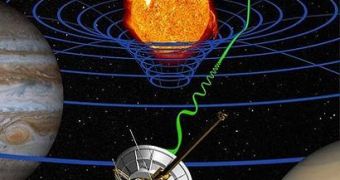Notions such as the past, the present and the future have fascinated philosophers for a very long time through their mysterious nature. But they have also captivated the imagination of scientists, who also attempt to decipher their meaning. A recent such explanation holds that, by combining Einstein's relative physics with quantum mechanics, you get the present – the equivalent of the past, crystallized from the future. The idea belongs to University of Cape Town scientist George Ellis and Princeton University expert Tony Rothman, Technology Review informs.
In relative physics, everything evolves from time-reversible local physics, so no special importance is given to differentiations between the past, the future and the present. Space and time can be merged into a single entity in such a Universe using a simple diagram, the researchers note. “The Universe just is: a fixed spacetime block. All past and future times are equally present, and the present 'now' is just one of an infinite number,” Rothman and Ellis believe. A large number of physicists have been trying to study this “block Cosmos” for the past few decades, but they haven't made much progress.
But the two investigators revealed recently that the block Universe changed considerably when quantum mechanics was thrown into the mix, in the sense that the past and the future took on completely different traits than they had under a simple, relativistic explanation. The weird laws of quantum mechanics – including superposition and quantum entanglement – dominate the future, whereas the past is entirely dominated by the harsh, cruel, unchangeable realities of classical mechanics. The team also reveals that the transition between the two takes place in the present.
This means that the fleeting moment we call the present has already passed, and the uncertainties of the future crystallize into the past and switch from being possibilities in several places at the same time to being static certainties. This is, in a nutshell, what Rothman and Ellis refer to as the “crystallizing block Universe” model. They also reveal that this approach could be a fundamental construct underlying the concept known as “arrow of time.” They explain, “The arrow of time arises simply because the future does not yet exist.” The work, “Time and Spacetime: The Crystallizing Block Universe,” appears online in the journal arXiv.

 14 DAY TRIAL //
14 DAY TRIAL //